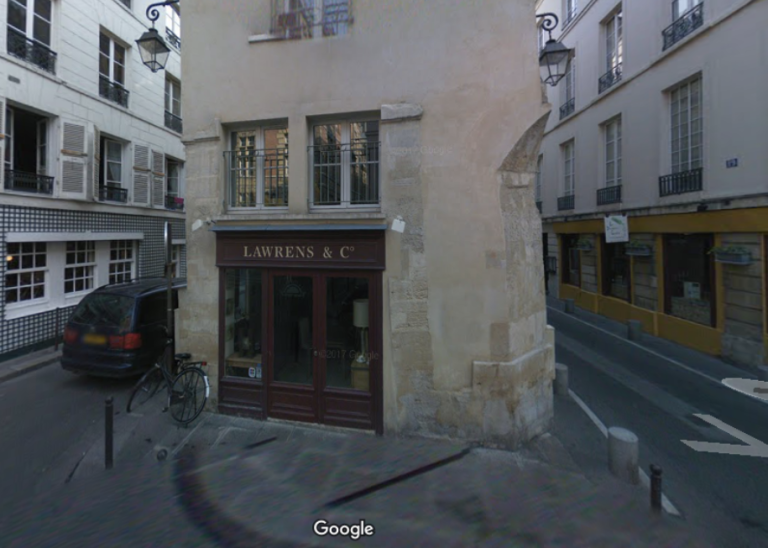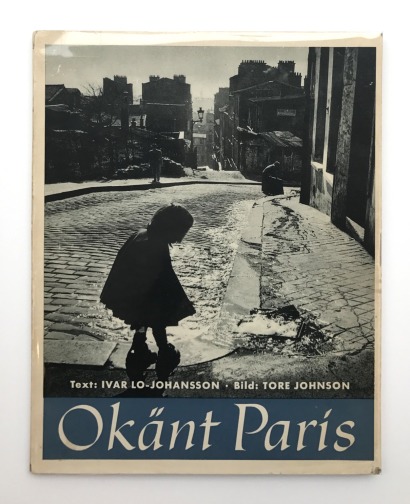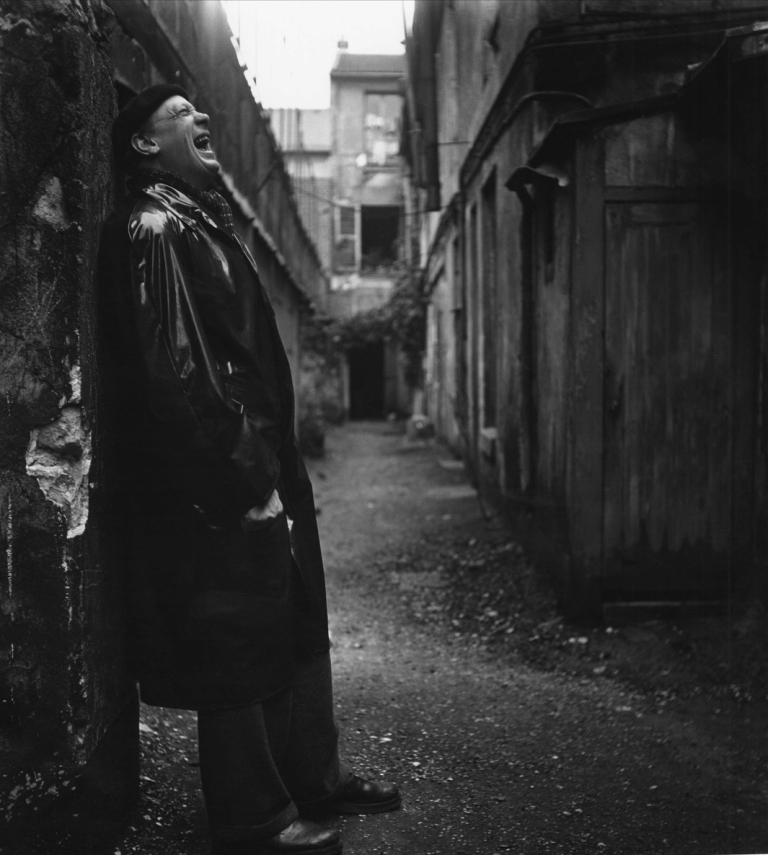 January 8: Though temporal duration and motion are essential to exposure in photography in the technology and calibration of the shutter, the representation of these phenomena can never be direct in a still image, only inferred.
January 8: Though temporal duration and motion are essential to exposure in photography in the technology and calibration of the shutter, the representation of these phenomena can never be direct in a still image, only inferred.
It is a year to the day that Brooklyn Museum’s Who Shot Sports: A Photographic History, 1843 to the Present concluded. Amongst the 170 photographers in the exhibition one was not surprised to find Jules-Etienne Marey (1830–1904).
Though a little less well-known than his exact contemporary, the controversial Eadweard Muybridge (1830–1904), his approach to the photographic record of motion was more scientific than the latter’s. Unlike the motion studies of Muybridge, who depicted movement as a series of discrete moments on separate, sequential negatives, Marey’s analyses of motion are characterized by multiple exposures on a single photographic plate, a technique he called chronophotography.

In 1881, Georges Demeny (1850–1917) assisted Marey, then a distinguished professor at the Collège de France, in using chronophotography to study movement. In 1902, Demeny was hired to head a scientific photographic laboratory at l’École de Jonville, a sports college in Paris for training athletes and soldiers. This was the first photographic sports research center in the world, and there Demeny used photography to study stress, fatigue, muscular movements, and efficiency in physical activity.

Czech Pavel Odovy, born on this date in 1953 in Domazlice, reminds us with his 2002 We talked about Leonardo that making measured depictions of human movement goes back at least as far as da Vinci’s c.1490 Vitruvian Man, Le proporzioni del corpo umano secondo Vitruvio. The title of Odvody’s work, which instead depicts a woman, may also be an oblique reference to T S Eliot’s The Love Song of J. Alfred Prufrock, Stanza II, in which “women come and go / Talking of Michelangelo.”
Odvody is one of a number of photographers who in the 1990s were using large format and ‘painting with light’ which Gjon Mili (1904-1984) famously used well before that, in 1949, for his portraits of Picasso in action. However Odvody has persisted and refined his methods over a couple of decades, where others have moved to digital imaging. He was trained in Mechanical Engineering from 1973 to 1979 at the Technical University in Prague, then moved to the Federal Republic of Germany in 1980 where from 1984 to 1990 he studied communication design, specializing in photography at the Fachhochschule in Darmstadt where he has resided since.
He worked for several years as a photo designer before beginning to produce artistic images which he has exhibited annually in solo shows since the mid nineties, though with a hiatus of seven years before 2014. Though one finds no explicit statement from him to the effect, one wonders, give the time frame, whether the migration of the medium to digital caused him, a staunch chemistry-based photographer, a crisis of faith.

His diptychs and triptychs from contact-printed large format negatives (some huge at 20x25cm!) as time series, are a particular innovation which harks back to Muybridge. The view camera would hardly seem to be the appropriate technology for the capture of motion, but it is light-painting, in which parts of the subject are exposed selectively and at different stages with a hand-held torch, which adds a further temporal dimension, seen in this diptych in the superimposition of the eye with open and closed lid.
![Pavel Odvody Large Portrait Study [Large Portrait Studies] 1998-1999 Gelatin silver print, contact print 22x14ô (56x36 cm)](https://onthisdateinphotography.files.wordpress.com/2018/01/pavel-odvody-large-portrait-study-large-portrait-studies-1998-1999-gelatin-silver-print-contact-print-22x14c3b4-56x36-cm.jpg?w=768)
![Pavel Odvody Study of a Motion [Motion studies] 2004 Gelatin silver print 10x8ô (25x20 cm) contact print : 50x40 cm](https://onthisdateinphotography.files.wordpress.com/2018/01/pavel-odvody-study-of-a-motion-motion-studies-2004-gelatin-silver-print-10x8c3b4-25x20-cm-contact-print-50x40-cm.jpg?w=768)
When the edge of the limbs and body are lit from the side the image becomes linear.


These experiments lead then to a technique which sets to whole image, figure and ground, in vibration in his series Seismograms, exhibited 2015 in Seismogramme at the Kunsthalle Darmstadt.
These are a more confident and expressive ‘action painting’ with the pen-light than the earlier series of exacting ‘contour drawings’ on the figure (below), and they represent a confidence and maturity of practice.
Odvody has combined his various techniques of ‘painting with light’ and multiple exposure with shifts of focus into an intriguing and unique semi-abstract works, a series which extends his ideas into the realm of quantum mechanics and the warping of time and space.

Back in the everyday, on the street, motion, action and reaction are at play. Tore Johnson, also born on this date, in 1928, in Saint-Leu-la-Forêt, France, became a naturalised Swedish citizen. Sten Didrik Bellander’s 1957 portrait speaks for him as a photographer who loved action and movement, with a touch of good-natured humour.
![ore Johnson on the go [en] SourceDigitaltMuseum [a] BylineBellander, Sten Didrik - 1957 - Nordic (Museum Foundatio](https://onthisdateinphotography.files.wordpress.com/2018/01/ore-johnson-on-the-go-en-sourcedigitaltmuseum-a-bylinebellander-sten-didrik-1957-nordic-museum-foundatio.jpg?w=768)

Au Vieux Paris reads the banner above the restaurant, and indeed, this is classic Paris. The same scene today lacks the poetry, but not merely because of the modernisation and gentrification that has been imposed over the intervening years.

It is not so much the locale as the drama of human interaction, Johnson’s choice of exposure which throws the figures into partial silhouette and outlines their gestures in a shadow-play against the sunlit background, that defines this as an ‘image à la sauvette’, in the words of Cartier-Bresson.

The fact that rue Bourbon-le-Chateau, which has been determined to be the site of Balthus’ controversial 1933 painting, is not more than 30 paces away from the location of Johnson’s photograph lends credibility to the idea that his picture is a homage to the painting.

Johnson published his street photographs in 1954 in Sweden in a book that is titled ‘Unknown Paris’ so clearly there is a mystique intended.
The book is full of action. Johnson is not content to produce a tourist guide or souvenir, but to capture the city’s humanity in their everyday activities.
The son of the writer Eyvind Johnson, Tore began his career as an assistant to KW Gullers in 1948 and was one of the participants in the exhibition Young Photographers in 1949 in Stockholm. From 1954 he worked as a photographer in Stockholm with the mission of Swedish and foreign newspapers, but especially for the magazine Vi (‘We’, founded 1904, still being issued).
He joined the Swedish collective Tio fotografer (‘Ten Photographers’), around Hans Hammarskiöld (1925-2012) that formed in 1958, and their subsequent photo agency Tiofoto. The group included Sten Didrik Bellander (1921–2001), Harry Dittmar, Sven Gillsäter (1921–2001), Rune Hassner (1928–2003), Hans Malmberg (1927-1977), Pål-Nils Nilsson (1929–2002), Georg Oddner (1923-2007), and Lennart Olson (1925–2010).

Johnson photographed in Paris with some of his Swedish colleagues (above) and the outcomes of his stay came to characterize much of his future style that he practiced on assignment to the US (New York, 1953, and 1955), France, Congo (1961), the Arctic region and the Gulf of Finland (1963).
 A narrative takes time to unfold and yet, though each photograph permits only a moment, Johnson manages to embed a story in each of his, whether humorous, trivial or dramatic; the rescue of a would-be suicide from the Seine, pedestrians negotiating a puddle, boys plotting to retrieve coins from a grating, a taxi-driver ruing the accident that has damaged his cab, children laughing at themselves in a fairground mirror, a man amongst flying autumn leaves in a gust of wind, a girl talking to her dog, children dressed as Pierrot, or the artist laughing in the rain.
A narrative takes time to unfold and yet, though each photograph permits only a moment, Johnson manages to embed a story in each of his, whether humorous, trivial or dramatic; the rescue of a would-be suicide from the Seine, pedestrians negotiating a puddle, boys plotting to retrieve coins from a grating, a taxi-driver ruing the accident that has damaged his cab, children laughing at themselves in a fairground mirror, a man amongst flying autumn leaves in a gust of wind, a girl talking to her dog, children dressed as Pierrot, or the artist laughing in the rain.








These photographers Tore Johnson and Pavel Odvody overcome the ‘still’ in still photography to transmit the life-signs of human gesture and movement, liveliness in fact.

![02c2a9pavelodvody-studiesofthebody Pavel Odvody (2005) Dance [Motion studies]. Gelatin silver print, contact print 24x18 cm](https://onthisdateinphotography.files.wordpress.com/2018/01/02c2a9pavelodvody-studiesofthebody.png?w=384&resize=384%2C515&h=515#038;h=515)
![Pavel Odvody Dance [Motion studies] 2005 Gelatin silver print, contact print 24x18 cm Pavel Odvody (2005) Dance [Motion studies]. Gelatin silver print, contact print 24x18 cm](https://onthisdateinphotography.files.wordpress.com/2018/01/pavel-odvody-dance-motion-studies-2005-gelatin-silver-print-contact-print-24x18-cm.jpg?w=376&resize=376%2C515&h=515#038;h=515)







![Pavel Odvody Krummau Invention 08 [Krummau Inventions] 2005 Gelatin silver print, contact print 24x18 cm Pavel Odvody (2005) Krummau Invention 08, from the series Krummau Inventions. Gelatin silver print, contact print 24x18 cm](https://onthisdateinphotography.files.wordpress.com/2018/01/pavel-odvody-krummau-invention-08-krummau-inventions-2005-gelatin-silver-print-contact-print-24x18-cm.jpg?w=252&resize=252%2C343&h=343#038;h=343)
![Pavel Odvody Krummau Invention 13 [Krummau Inventions] 2005 Gelatin silver print, contact print 24x18 cm Pavel Odvody (2005) Krummau Invention 13, from the series Krummau Inventions. Gelatin silver print, contact print 24x18 cm](https://onthisdateinphotography.files.wordpress.com/2018/01/pavel-odvody-krummau-invention-13-krummau-inventions-2005-gelatin-silver-print-contact-print-24x18-cm.jpg?w=252&resize=252%2C343&h=343#038;h=343)
![Pavel Odvody Krummau Invention 05 [Krummau Inventions] 2005 Gelatin silver print, contact print 24x18 cm Pavel Odvody (2005) Krummau Invention 05, from the series Krummau Inventions. Gelatin silver print, contact print 24x18 cm](https://onthisdateinphotography.files.wordpress.com/2018/01/pavel-odvody-krummau-invention-05-krummau-inventions-2005-gelatin-silver-print-contact-print-24x18-cm.jpg?w=252&resize=252%2C343&h=343#038;h=343)

One thought on “January 8: Motion”